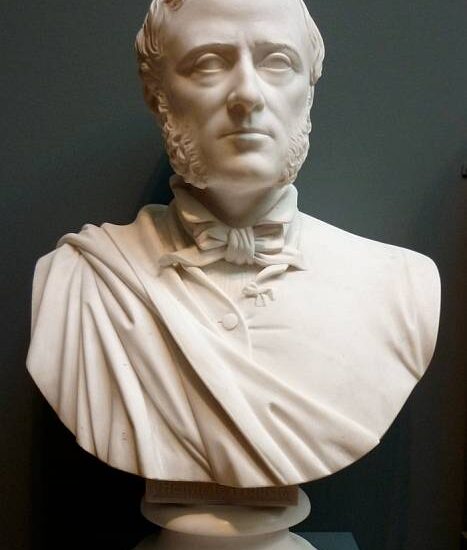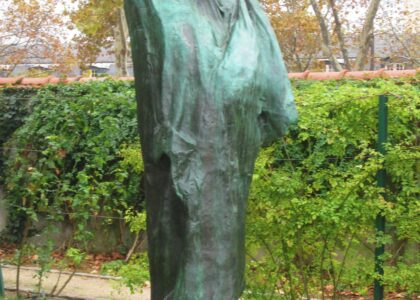Henry de Triqueti, a name that echoes through the halls of art history, is remembered as a master sculptor of the 19th century. Born in 1803 in Conflans-sur-Loing in the Loiret region, this French artist was at the forefront of the Romantic sculpture movement, leaving behind a legacy that transcended national borders. Triqueti’s artistic journey was deeply rooted in a multicultural background, as his father was a baron from Savoy and his mother had Swiss origins. This cosmopolitan heritage influenced his education and artistic tastes, allowing him to embrace a wide range of styles and materials.
Triqueti’s early artistic training began under the tutelage of Anne Louis Girodet Trioson in Paris, where he honed his skills in drawing and sculpture. His career soared when he moved to England, where he became a favored artist among the Victorian elite. One of his most notable commissions was the intricate marble work in the Albert Memorial Chapel at Windsor Castle, a testament to his ability to blend classical influences with modern Romanticism.
The sculptor’s connection with the Orléans family, who were patrons of the arts, played a significant role in his career. During their exile in England after the 1848 revolution in France, Triqueti created several pieces for them, further cementing his status as a sought-after artist. His works are characterized by their exquisite detail and emotional depth, often drawing inspiration from nature and mythology.
After his passing in 1874, Triqueti’s legacy continued through the efforts of his daughter, Blanche Lee Childe, who donated many of his works to the Musée Girodet in Montargis and the Musée des Beaux-Arts in Orléans. These museums now house the Triqueti rooms, dedicated to preserving and showcasing his artistic contributions.
Triqueti’s influence extended beyond sculpture, as he was also involved in the broader discourse of art and culture, participating in exhibitions and contributing to the vibrant art scene of his time. His works remain a testament to the enduring power of sculpture to convey human emotion and storytelling.





